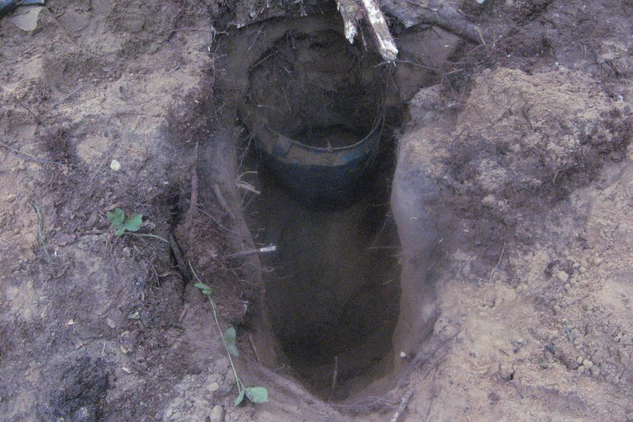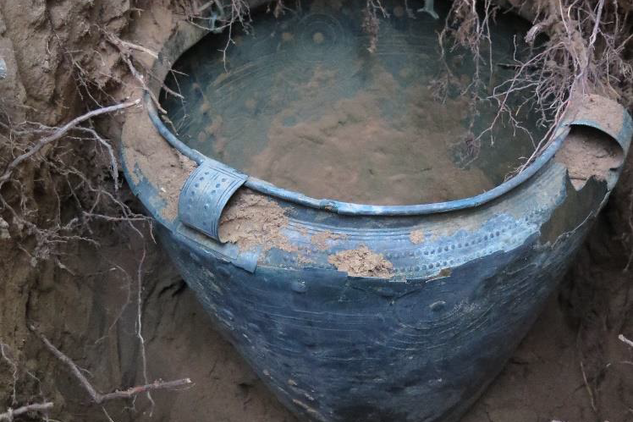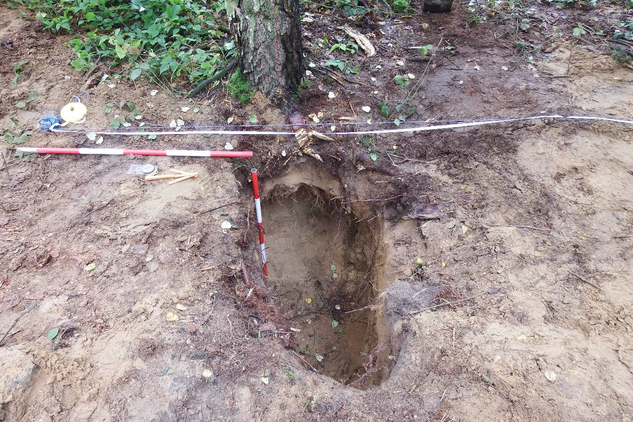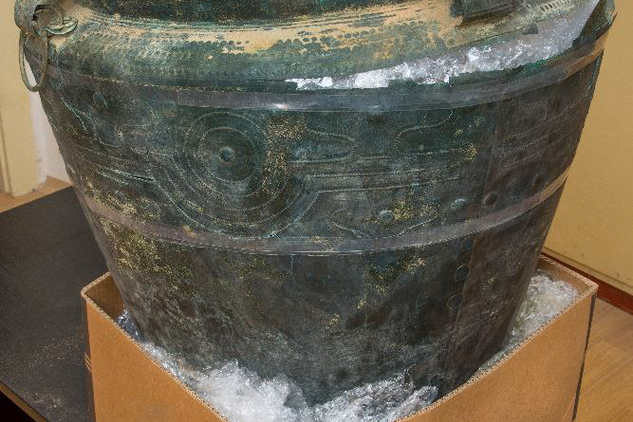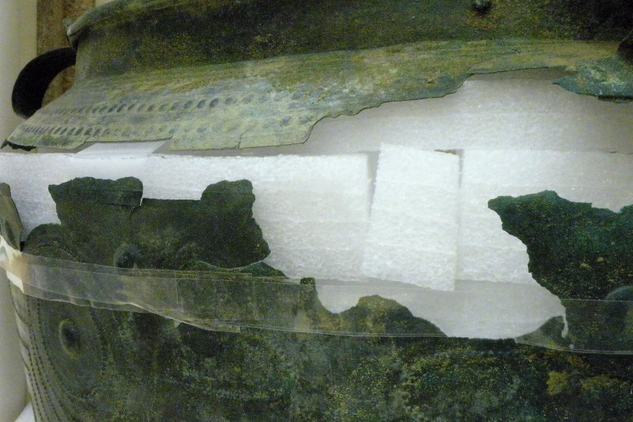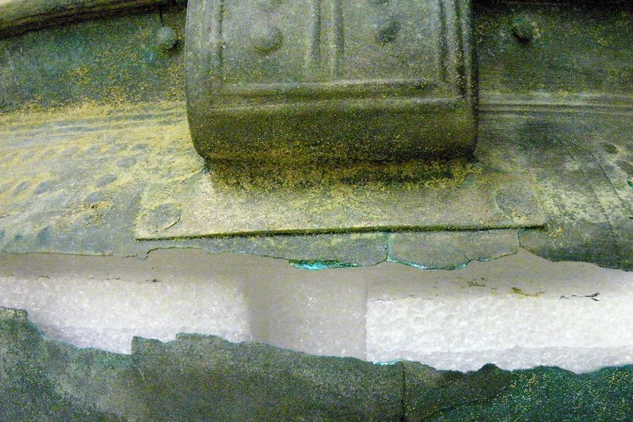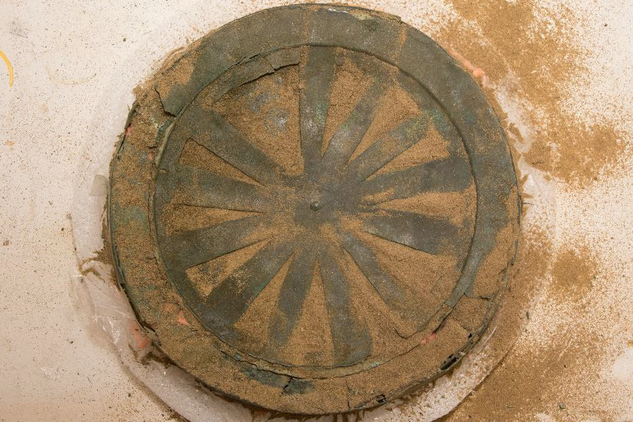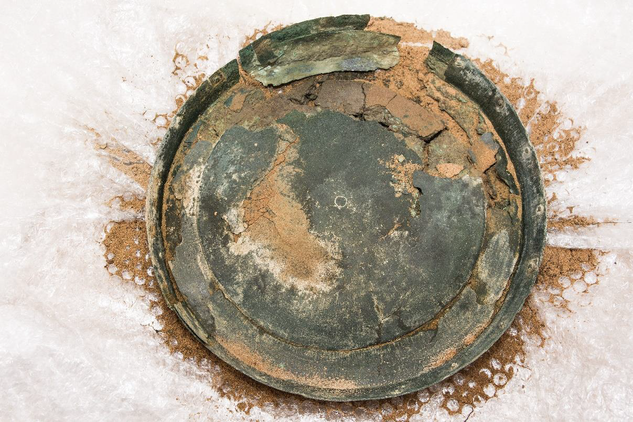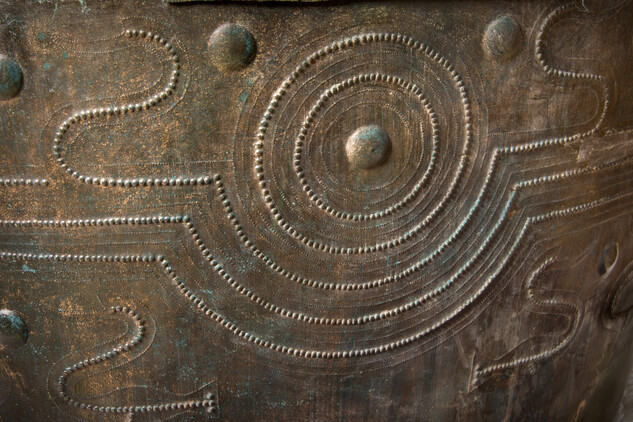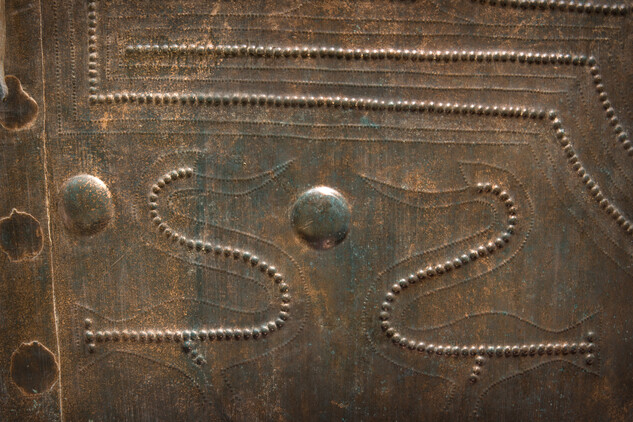The bronze situla can be dated to the very beginning of the late Bronze Age, i.e. the late 11th or early 10th century BC. The vessel, with the height and maximum diameter of 60 Carolinum, is partially damaged; the bottom is separated from the lower concave part. The main decoration consists of belabored circles and four water birds, probably swans, in heraldic setup. The work is very detailed, beaks and feet of the waterfowl are clearly visible. The scenes can be interpreted as “sun barges”.
Situla is the first finding of its kind in the Czech Republic, which indicates the importance of the region in the beginning of the late Bronze Age. It’s also a worthy contribution to the research of bronze depots, an important phenomenon of the era. Their purpose and reason that they were stored yet has to be explained. Each finding, however, sheds more light upon the subject. Especially worthy is the fact that the vessel was expertly taken out by the archaeologists, so no context information was lost as usual in such cases. We therefore can interpret the finding as a mono-deposit, stored deliberately. Thanks to the good media presentation by the museum employees, the case appeals to general public, which is really good, especially at times when most metallic artifacts end up on the black market or in private collections.
Situla will become part of the archaeological exhibition Against the Timeline – Pardubice Region in the Prehistoric Era and Early Middle Ages, established in the Museum of East Bohemia in 2015. The exhibition takes the visitors through the history of the region from the early Middle Ages all the way to the most ancient prehistory. It features interactive elements as well as a haptic path, which significantly expands the target group of visitors. Many important artifacts are presented, including bronze depot from Lžovice, two-handed axe from Kunětice, or unique Neolithic sculpture of a goat’s head from Třebosice. The research of the Bronze Age has been traditional in Pardubický Region since the 19th century, which is reflected in the overall concept of the exhibition.
Based on the TV report, the archaeologists from the Museum of East Bohemia were contacted by their colleagues from Debrecen and Hajdúböszörmény, Hungary, where four very similar vessels have been found, with almost the same decorations. They were also separately deposed, far from any residential area, so the context looks similar as well. Thus, international cooperation has started, opening a great new room for research.
Nominated for the Pardubický Region by the regional center of the National Heritage Institute in Pardubice.
The Department of Archaeology of the Museum of East Bohemia, represented by Tomáš Zavoral (head of department), was nominated for the National Heritage Institute Prize, category: Presentation of values.

